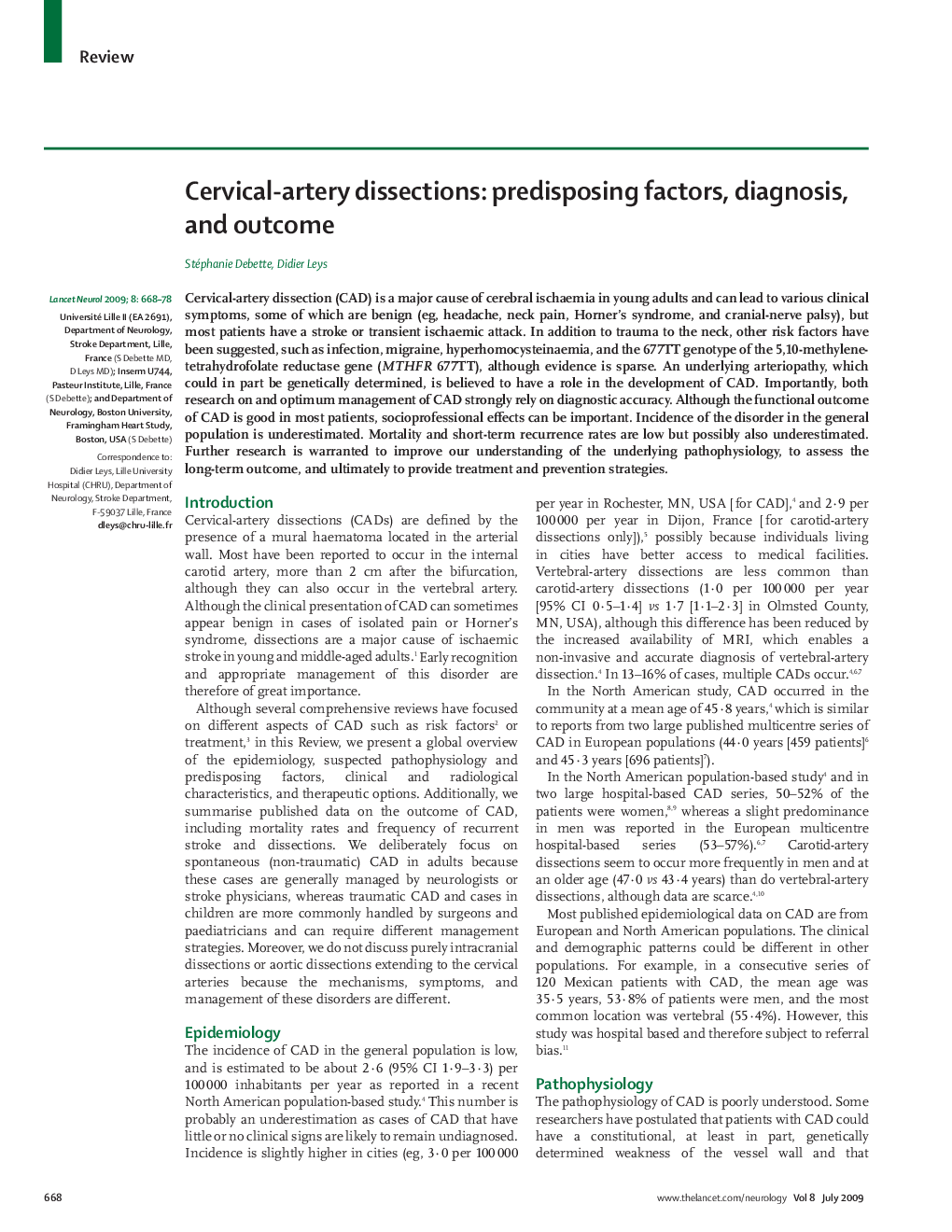| Article ID | Journal | Published Year | Pages | File Type |
|---|---|---|---|---|
| 3067337 | The Lancet Neurology | 2009 | 11 Pages |
SummaryCervical-artery dissection (CAD) is a major cause of cerebral ischaemia in young adults and can lead to various clinical symptoms, some of which are benign (eg, headache, neck pain, Horner's syndrome, and cranial-nerve palsy), but most patients have a stroke or transient ischaemic attack. In addition to trauma to the neck, other risk factors have been suggested, such as infection, migraine, hyperhomocysteinaemia, and the 677TT genotype of the 5,10-methylenetetrahydrofolate reductase gene (MTHFR 677TT), although evidence is sparse. An underlying arteriopathy, which could in part be genetically determined, is believed to have a role in the development of CAD. Importantly, both research on and optimum management of CAD strongly rely on diagnostic accuracy. Although the functional outcome of CAD is good in most patients, socioprofessional effects can be important. Incidence of the disorder in the general population is underestimated. Mortality and short-term recurrence rates are low but possibly also underestimated. Further research is warranted to improve our understanding of the underlying pathophysiology, to assess the long-term outcome, and ultimately to provide treatment and prevention strategies.
